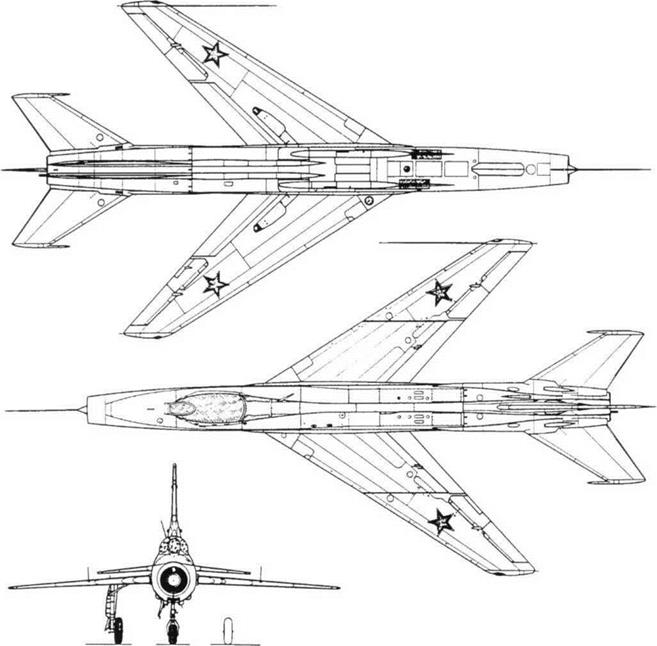MiG-21 PD, 23-31
Also designated MiG-21 PD, and known to the Mikoyan OKB as Izdeliye (product) 92, this was essentially a MiG-21 PFM fighter fitted with a lift-engine bay amidships. The early 1960s were a time when aircraft designers around the world were excited by the possibility of VTOL (vertical take-off and landing), which among other things enabled combat aircraft to avoid nuclear destruction by dispersing away from known airfields. Dassault put eight lift engines into the Mirage to create
|




the world’s first Mach 2 VTOL. Mikoyan decided instead to build a STOL (short take-off and landing) MiG-21. The engine KB of P A Kolesov produced the simple RD-36-35, a lift turbojet rated at 2,350kg (5,181 Ib). It would only have needed four of these to give the MiG-21 VTOL capability, but instead Mikoyan installed just two. The fuselage was removed between Frames 12 and 28A and replaced by a slightly widened fireproof bay housing the two lift engines. They were not pivoted but fixed at an inclination of 80°. Fuel was drawn from the (reduced) main tankage, and starting was by impingement jets using air bled from the R-11F2-300 main engine. The top of the bay was formed by a large lou – vred door hinged at the back. In STOL mode this door was pushed up by a hydraulic jack to provide unrestricted airflow to the lift engines. Each jet blasted down through a vectoring box. Made of heat-resistant steel, this provided seven curved vanes under each lift jet. These were pivoted and could be vectored by the pilot through an angular range of some ±25° to provide forward thrust or braking. The 23-31 was intended for exploring STOL, and for improved control at low airspeeds the main-engine bleed served reaction-control jets pointing down from under the nose and under each wingtip. The landing gears were fixed, and there was only one airbrake, of a new design, ahead of the lift-jet bay. Pyotr M Ostapenko made the first flight on 16th June 1966. He and BAOrlov both considered control at low airspeeds to be inadequate, and Ostapenko said ‘For take-off you need maximum dry power on the main engine, but for landing you need full afterburner!’ This aircraft performed briefly at the Moscow Domodedovo airshow on 9th July 1967. It was then grounded.











